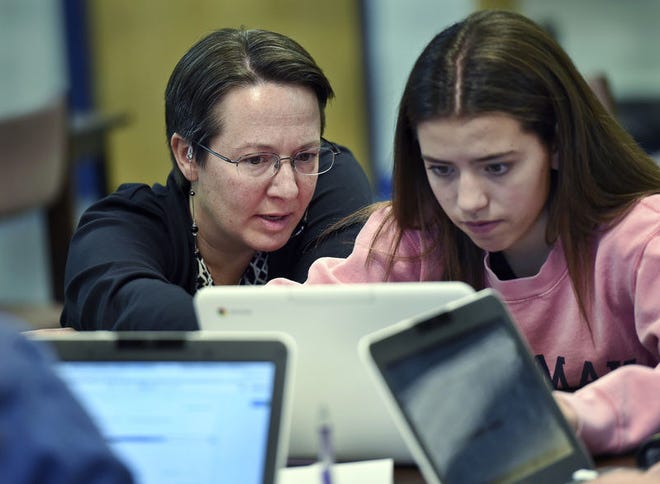During this summer, a team of students from MIT embarked on a journey to the sou …
Media Literacy Now Required Subject in California Schools to Combat the Spread of Fake News
Emma Wordsmith

California schools now have a new requirement: teaching students how to identify “fake news” through the integration of media literacy into English, science, math, and history lessons across all grade levels.”
In February, California State Assembly member Marc Berman introduced the bill, which was signed by Gov. Gavin Newsom on Oct. 13.
This bill expands on previous laws that necessitate the State Department of Education to provide media literacy resources and instructional materials on its website for school districts’ access.
Starting Jan. 1, media literacy will be incorporated into the standards for English, science, math, and history when they are revised.
Media literacy lessons are also required in states like New Jersey, Illinois, and Delaware, according to Assembly member Berman’s website.
Erin McNeill, the founder and CEO of Media Literacy Now, an organization based in Massachusetts advocating for media literacy education in schools, revealed that at least 18 state legislatures have taken steps to give priority to media literacy education.
Washington state is taking significant strides in media literacy, McNeill noted.
The state has funded teacher training and development and has a dedicated person within the education agency specifically focusing on media literacy and its implementation in the classroom.
Satan club: Parents in a Connecticut town worry as ‘After School Satan Club’ plans meeting
Understanding the significance of the media literacy bill
The media literacy bill was introduced in February primarily to ensure that students have the ability to ask and answer questions about the “moral obligations and ethical standards regarding what appears on social media networks and digital platforms,” according to the text of the bill.
Given that over 90% of young people are online, legislators believe that social media will continue to reach and influence them.
The bill’s text argues that a major issue is that many young individuals struggle to differentiate between advertisements and news stories. Citing a study from Stanford University, Berman mentioned that 82% of middle school students couldn’t distinguish between ads and news stories.
In the bill’s text, Berman also pointed to a 2019 Stanford University study where more than half of the surveyed high school students considered a “grainy” video claiming to show ballot stuffing as “strong evidence” of voter fraud in the U.S.
Berman clarified that the video was actually filmed in Russia.
With the rise of misinformation, this bill aims to offer legislators a method to combat online falsehoods and their impact on democratic decision-making and public health.
The bill states that prior to its implementation, there were no established lessons to help students become more information-literate. Now, with the law in effect, students from kindergarten to 12th grade will have the opportunity to enhance their media literacy skills.
Media literacy organization emphasizes classroom implementation and evaluation
California’s media literacy law received support from both sides of the political spectrum, ensuring that even kindergarteners will be introduced to media literacy in some form.
According to McNeill from Media Literacy Now, media literacy for younger students can involve asking questions. For instance, she suggested asking children about toy commercials and whether the toy actually does what is shown in the advertisement.
McNeill expressed optimism about California’s plan, especially given the inclusion of frameworks that will shape state resources. The state will review these resources and allocate funding for teacher training.
McNeill emphasized that California’s efforts are not solely focused on news but also encompass social media.
She pointed out that issues related to social media include bullying, dangerous challenges, and instances of sexual extortion of teenage boys.
McNeill recommended that legislators be proactive in evaluating how media literacy is taught, which school districts are exceling in its implementation, and which areas require more attention.
Native American heritage and schools: Hair length policy at Kansas school sparks backlash after Native American boy, 8, is forced to cut hair
Identifying ‘fake news’ and misinformation
Legislators in California want to ensure that all students possess the necessary media literacy skills to “critically consume and use social media and other forms of media.”
Berman stated on his website that misinformation can have “terrifying” real-world effects, citing climate denial, vaccine conspiracy theories, and other “deadly consequences.”
He believes that it is their responsibility to teach the next generation to be more discerning consumers of online content, more resistant to misinformation, propaganda, and conspiracy theories. Additionally, students will learn to be responsible digital citizens, intentional about their online presence, and better understand online safety and privacy.


